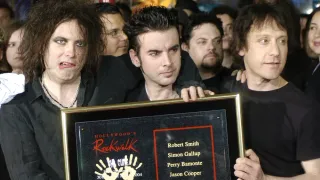August 4, 2022
Donald Glover Gets Grounded on Final Season of 'Atlanta'
Beth Harris READ TIME: 2 MIN.
Donald Glover warned his fellow writers from the first day on "Atlanta" that the show would get canceled for what it was going to attempt.
He was wrong.
The buzzy FX series won Emmys and drew praise for its social commentary and experimentation that pushed boundaries when it debuted in 2016. The show begins its fourth and final season on Sept. 15. The premiere includes two episodes of the 10-episode season.
"I feel like this is probably the most grounded season. It explores people more than we have before," Glover told a TV critics' meeting Tuesday. "We're right now kind of living in a time where you just don't give people the benefit of the doubt so I feel like this is a good time to kind of explore that more."
Glover writes, directs, executive produces and stars as Earn Marks, a Princeton dropout who manages his rapper cousin as they navigate the Atlanta rap scene.
The show's run has been spread out, with FX citing scheduling conflicts for creating a wide gap between seasons two and three. The sophomore episodes concluded in May 2018, and season three debuted this past March.
"Our show started kind of punk, like no one cares about a lot of stuff," Glover said. "That was my mindset anyway, but by the end we cared about a lot of stuff. A lot of our lives changed in a lot of ways so we kind of grew up. We ended up being a show about people and before it was about do people matter."
The show has been criticized by some Black viewers, including those who claim it's inauthentic about the Black experience, and Glover has been singled out for his depiction of Black female characters.
"I listen to the criticisms, but I'm also like the conversation isn't as elevated as it should be," Glover said. "This is such a Black show on a lot of levels. To say that it's for white people is like we're cutting ourselves down. It's just sad to me mostly."
Stephen Glover, who co-writes the show with his older brother, is bolstered by Black viewers he runs into telling him they're inspired to "do cooler and weirder stuff" because of the show.
"For me that is the real kind of conversation that's happening out there that I listen to," he said. "I kind of get my feelings from the streets."
Last season took place almost entirely in Europe and included four installments that focused on one-off characters, which drew mixed opinions from viewers. Some of that stand-alone element is back this fall, although the show returns to its home city.
"It felt for a lot of people like a step out of the way we do things, but for me it's kind of like we've always done stuff like that," Stephen Glover said. "Maybe people won't hate us so much this time."
A laughing Donald Glover added, "If the question is did we learn our lesson, the answer is no."






